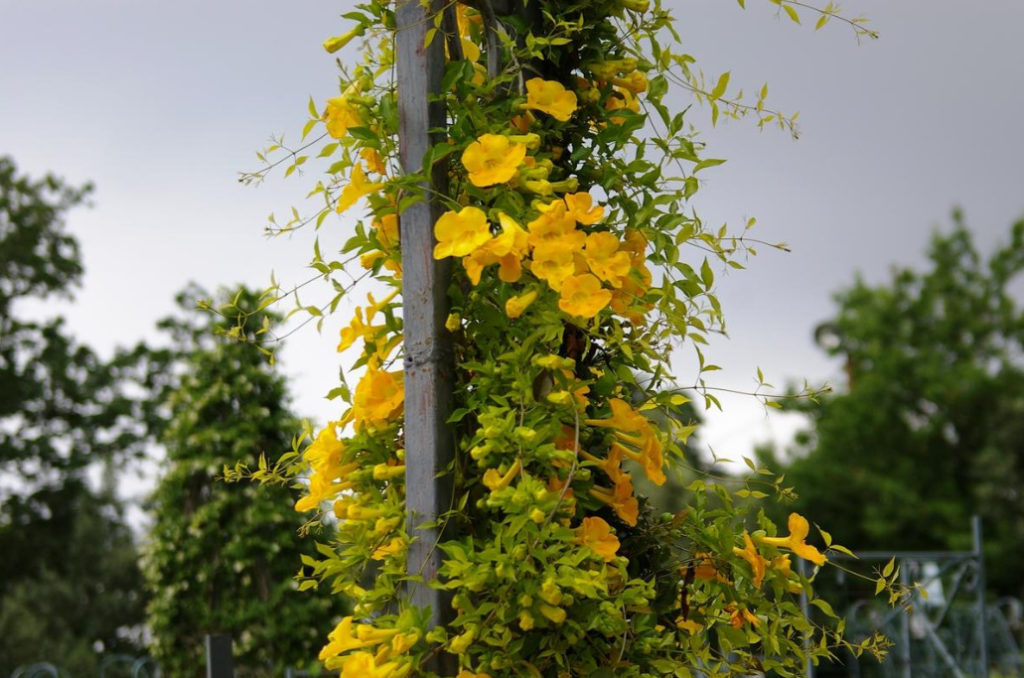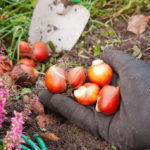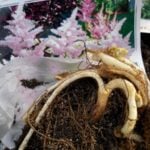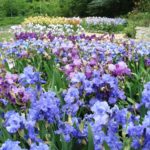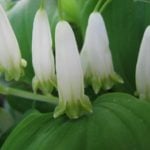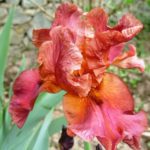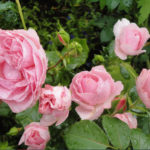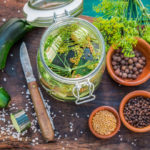Perhaps there is no such user on our site, which at least once in my life is not faced with the need for vertical gardening. Close the unsightly fence, summer toilet; divide the narrow area into zones with the help of green partitions, arrange hedges using vines, decorate the summer terrace, decorate the finally acquired arch or built a gazebo — in any case, vertical gardening — one of the most affordable and beautiful solutions.
All the possibilities and not count. Moreover, the usual plants are considered in the last place — you always want something new, interesting, exotic, to strike neighbors on the spot and cause a true delight of relatives and friends.
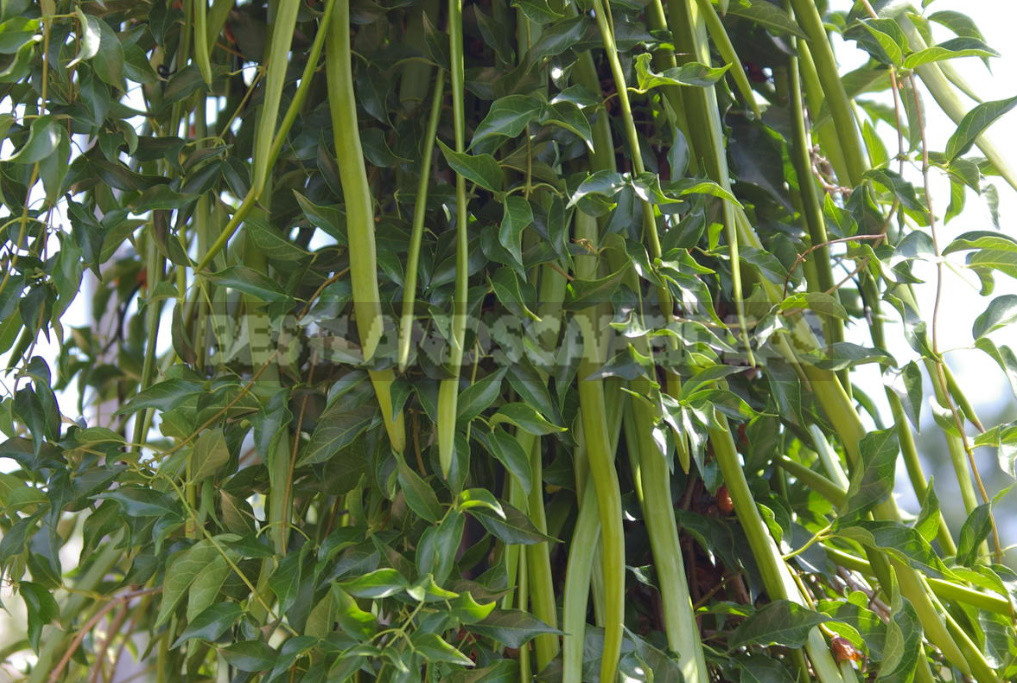
In 1993-1996 I had a chance to test annual and some long-term heat-loving vines that can be grown in the middle lane as annuals. Now, after so many years, we can draw conclusions about those vines that have not taken root in the suburban areas, proudly remaining in the rank of inaccessible to most ordinary gardeners “rarities”.
Eccremocarpus scaber
Elegant antennal fast-growing annual vine up to 3-5 m in length from the Bignoniaceae family. She’s from Chile. The British call it the Chilean flower of glory.
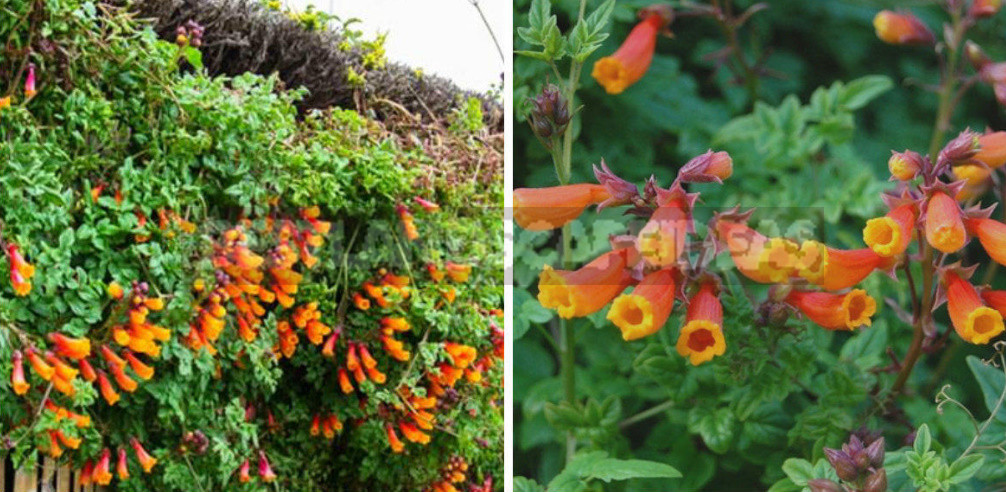
Leaves are pinnate, 5-7 cm long, at the ends are branched antennae. Graceful Vistula is particularly attractive during flowering, which lasts from late spring to late autumn. Tubular orange-red flowers up to 2.5 cm, collected in racemes 10-15 cm long fruit small, spear-shaped, green; ripen in August.
Ornamental varieties, hybrids and forms:
- ‘Anglia Hybrids’ – a mixture of colors: red, pink, orange, yellow;
- f. aureus – yellow flowers;
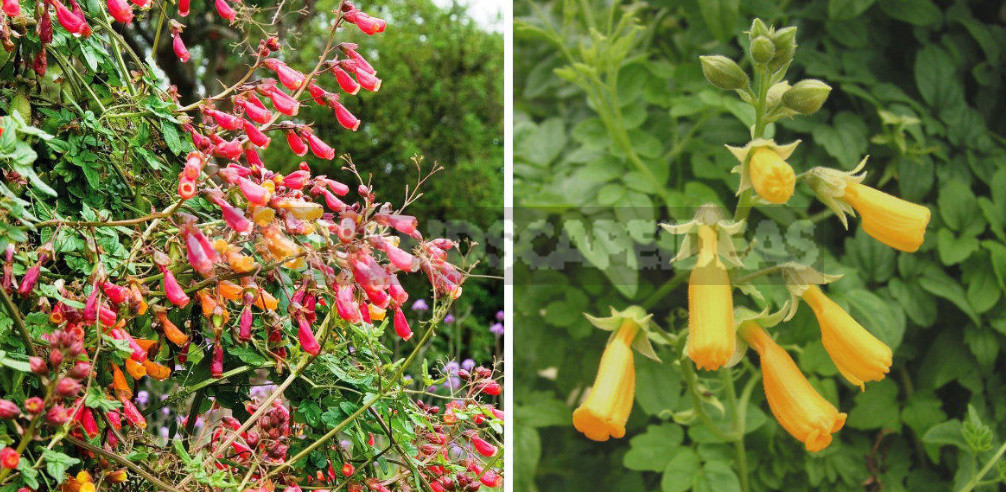
- ‘Cherry Red’ – Carmine red flowers;
- f. roseus – bright pink flowers.
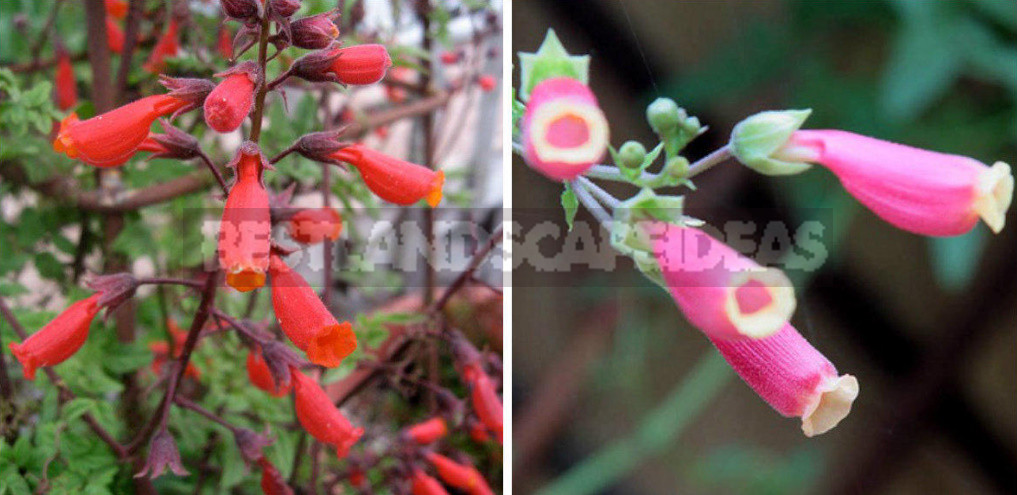
Features of cultivation
Like most annual vines, it is well possible only in Sunny places with loose nutritious soil, abundant regular watering, weekly fertilizing with full mineral fertilizer, the establishment of supports and the direction of shoots.
Propagated by seeds. Sowing for seedlings in February – March, in peat-humus pots (the Vistula does not tolerate transplantation), surface. At the end of may, the plants are transferred into the open ground, adhering to the distance between the seedlings of about 30 cm.
Accommodation in the country
This spectacular vine is ideal for shielding warm, South-facing walls, canopies, sheds.
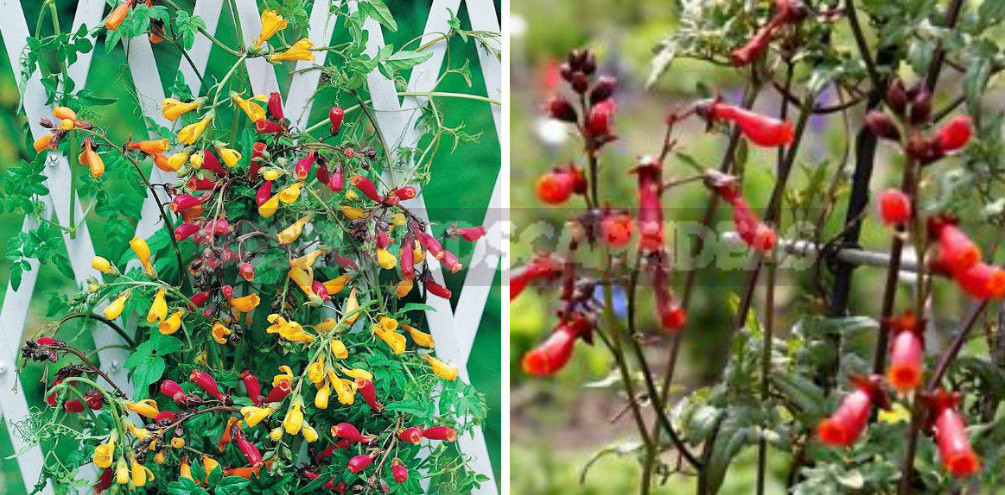
Eccremocarpus scaber is effective throughout the summer with openwork dark green leaves, and bright, like splashes of multi-colored paints, tubular flowers are not afraid of even the first autumn frosts. Although it is difficult to fix the flowers of the Vistula vertically in a cut form, but they look good and stand in the water.
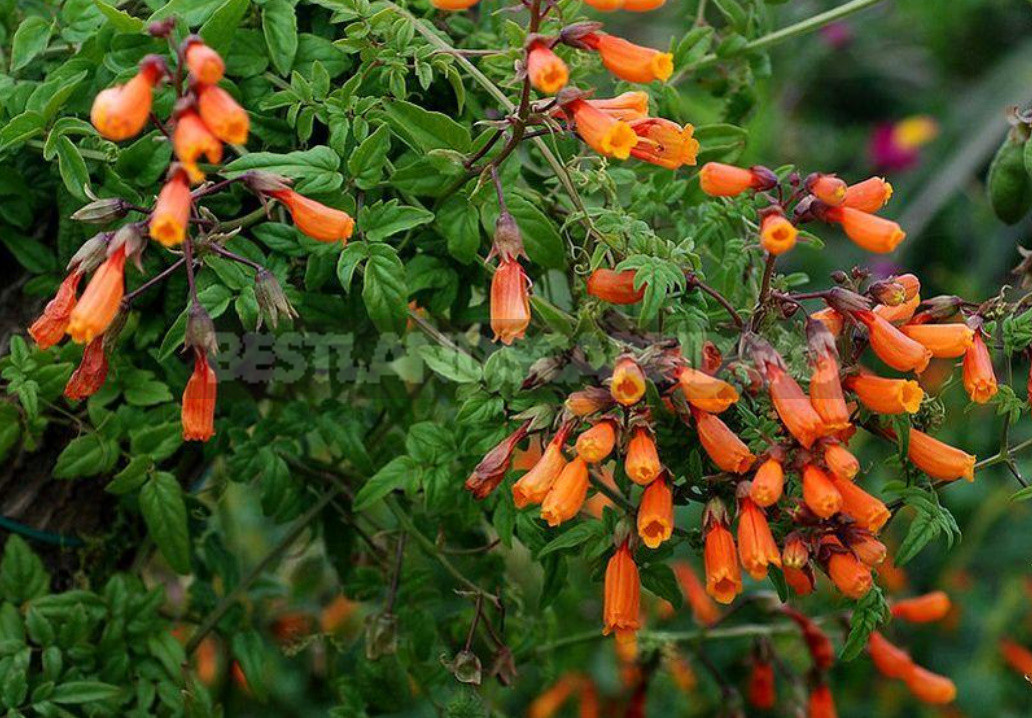
Lophospermum erubescens, syn. Asarina erubescens
Attractive vine height of 3 m or more.
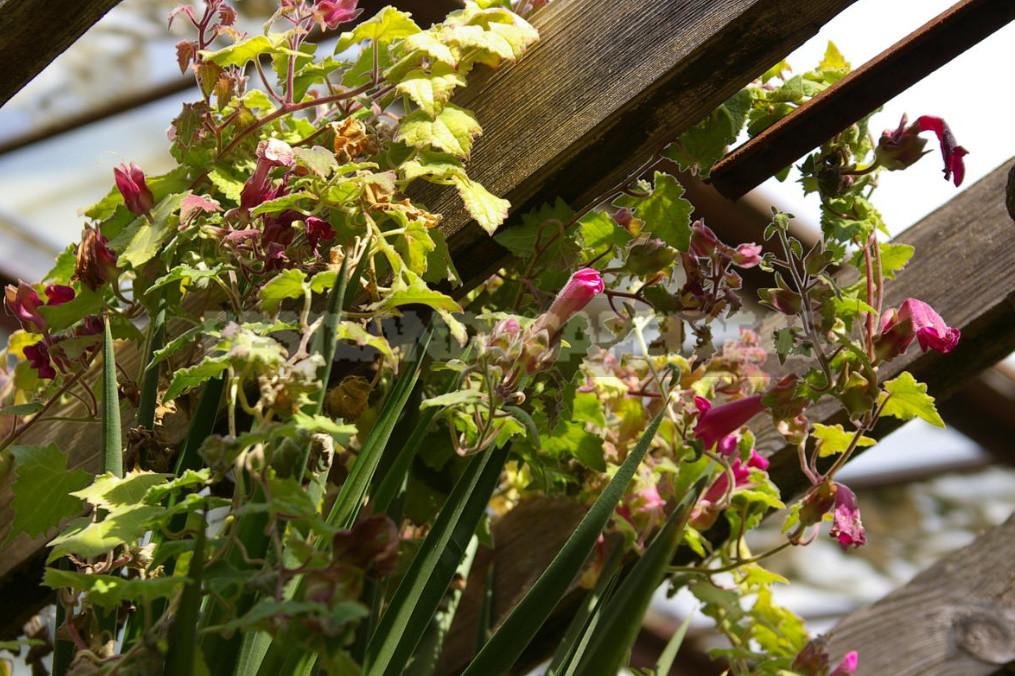
She comes from Mexico. She, like Maurandya barclayana, petioles and stems twisted around the support. Stems at the base can lignify. Gray-green velvety leaves up to 7 cm flowers funnel-shaped, pink, up to 7 cm, similar to the flowers of gloxinia or sinning; bloom from July to September. Rounded fruit-boxes are often tied without artificial pollination.
Features of cultivation
It grows well and blooms in Sunny places, the walls of the southern expositions on fertile, non-acid, well-moist soils. Responsive to regular watering, mulching with organic substrate, regular (1 time in 10 days) feeding (alternate) infusion of chicken manure and full mineral (during flowering, preferably phosphorus-potassium) fertilizer.
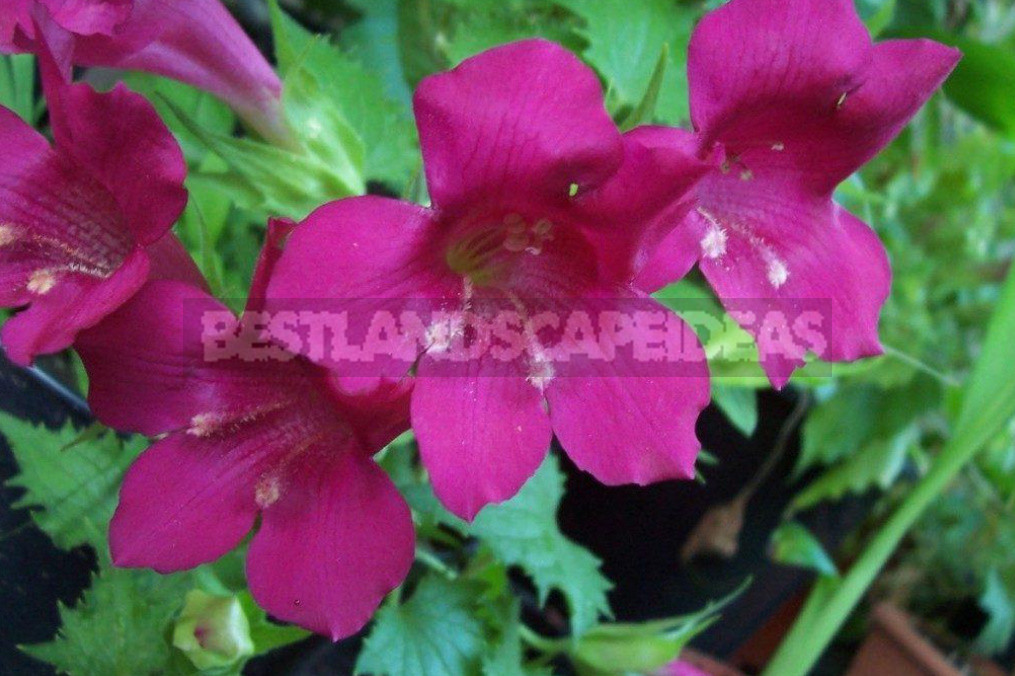
Propagated through seedlings; sown in February – March, seedlings dive. In may, planted in the open ground, adhering to the distance between plants 15-20 cm Can be sown in June and July in pots, then flowering will be only the next year, after wintering indoors.
Accommodation in the country
Good in the design of gazebos, pergolas, trellises. It quickly forms a thick patterned curtain of leaves, among which later crumbles many charming flowers. You can grow in basket culture.
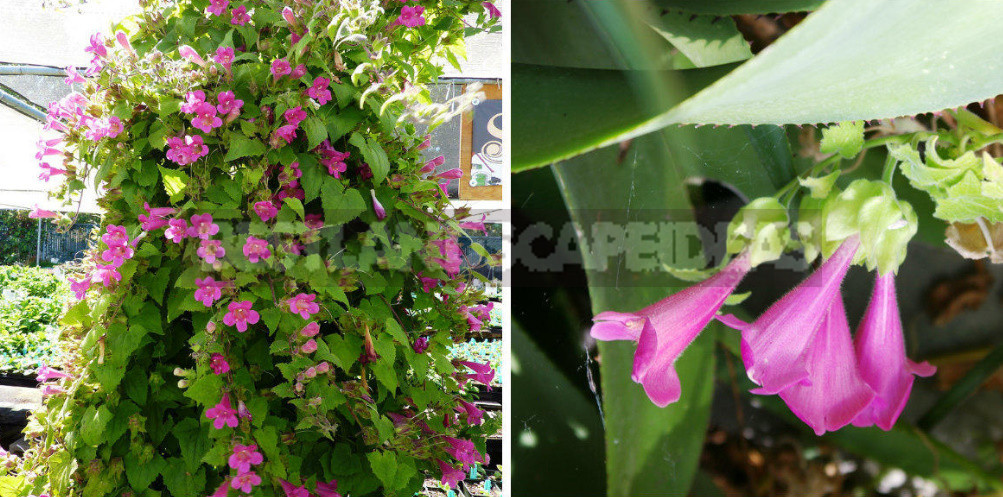
Despite the unconditional beauty of the flowers, they are not suitable for cutting.
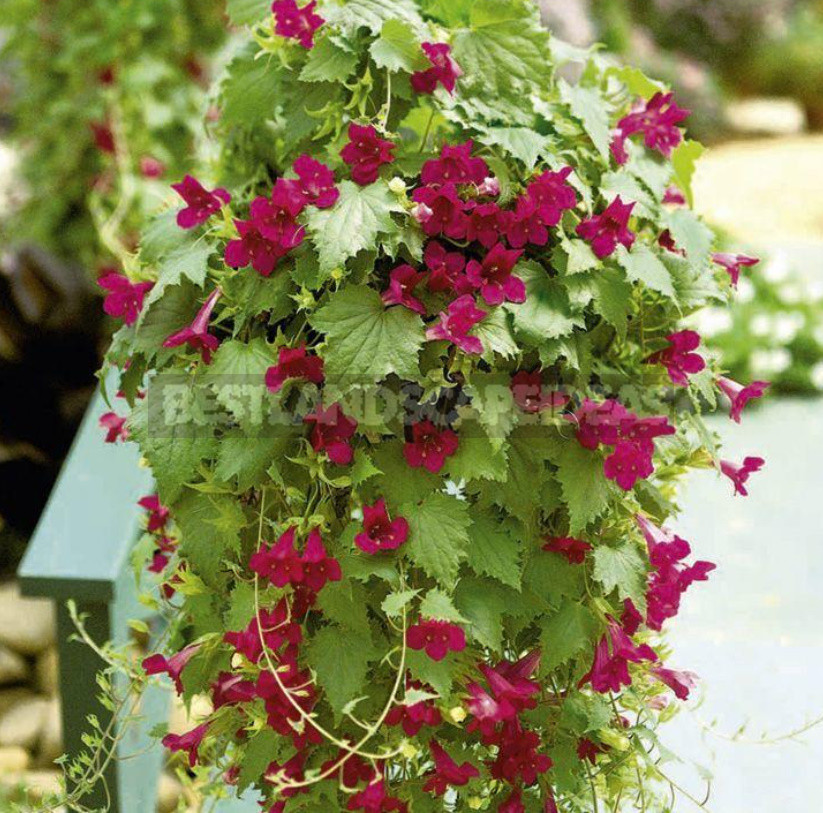
Maurandya barclayana, syn. Asarina barclayana
Spectacular representative of the family Scrophulariaceae, which is twisted around the supports petioles and pedicels.
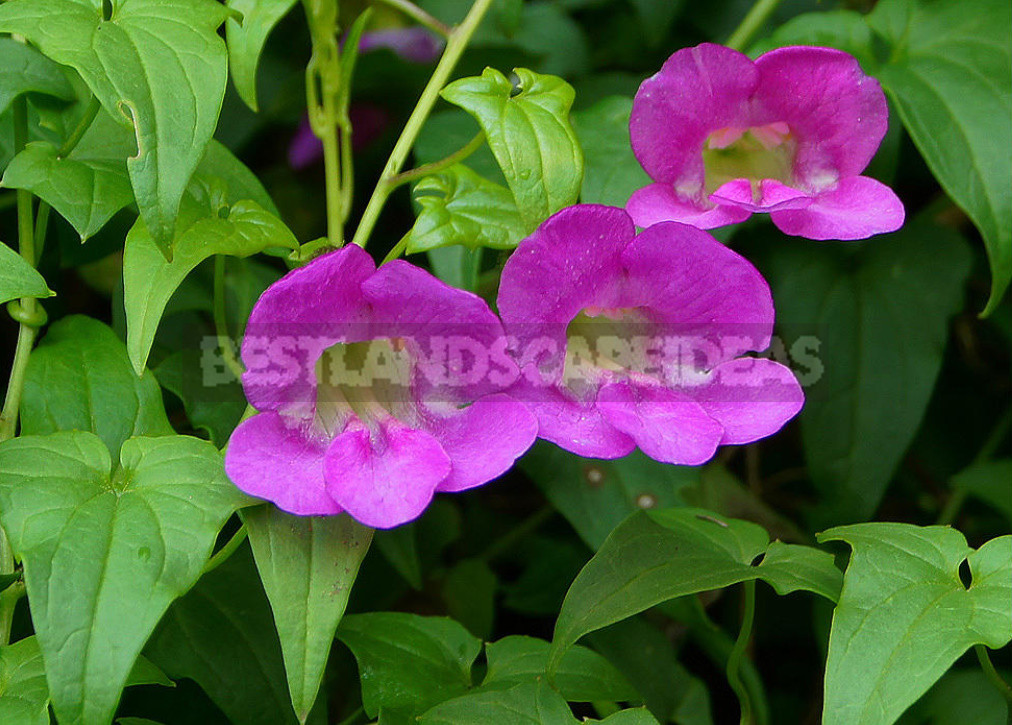
Climbing annual vine reaches a length of 2-5 m. it Comes from Mexico. Leaves from triangular to lobed, 2.5-4.5 cm long flowers are single, bell-shaped, dark pink, purple, with white throat, 4-7 cm long; bloom from June to the end of October, and even later. Since the end of September, begin to ripen rounded fruits. From the Mature box through the holes, the seeds gradually pour out and spread by the wind.
Features of cultivation
Like Eccremocarpus scaber.
Accommodation in the country
Very elegant vine, which requires no less elegant support. Can be grown in pots and used in decorating holiday destinations. On sale may be seeds M. purpusii, which is very similar to it, but it grows only a length of only 60 cm.
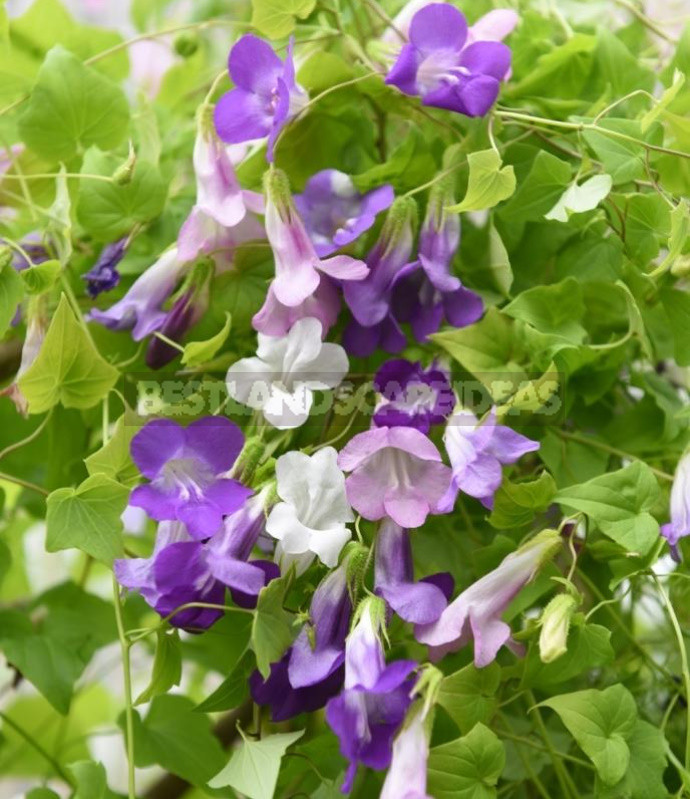
Macfadyena unguis-cati, syn. Bignonia unguis-cati
Wonderful Liana, but still a rare guest in our cottages.
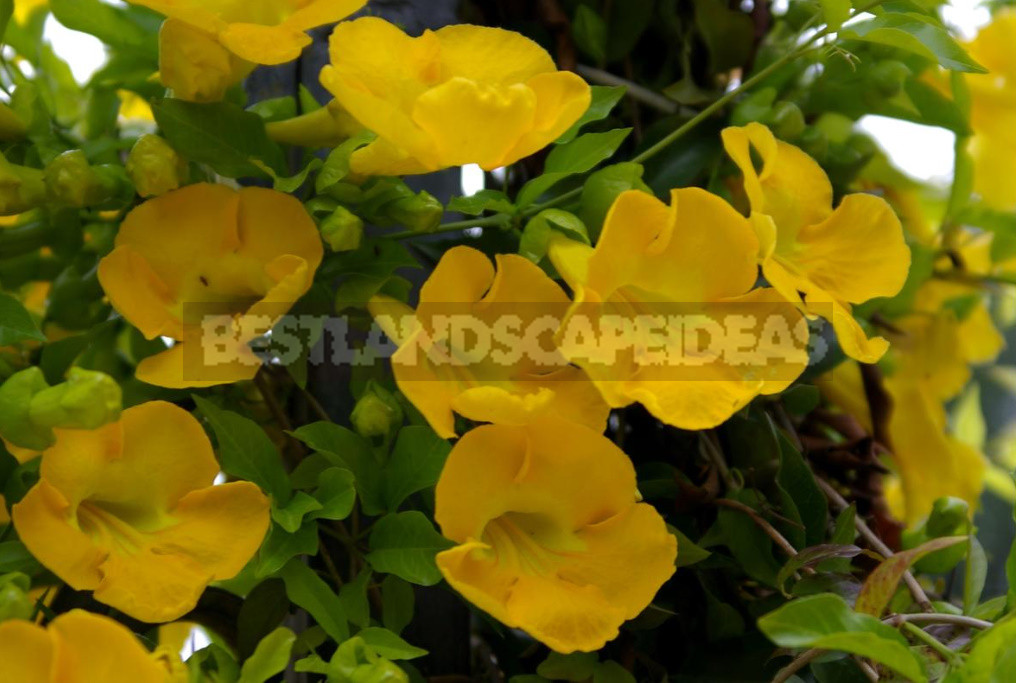
Her beauty in the open ground defies description!
And finally, the traditional questions: was grown whether you are at the cottage these rare vines? If Yes, then share with us your achievements, tell us whether they bloomed, fruited, as wintered.
